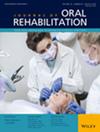Burning Mouth Syndrome: A Narrative Review of Neurobiological Mechanisms and Management Strategies
Abstract
Background
Burning mouth syndrome (BMS) is a chronic pain disorder affecting the oral mucosa, primarily characterised by a burning sensation in otherwise healthy-appearing tissues. Due to the absence of specific clinical manifestations and identifiable pathological changes, BMS is often misdiagnosed, leading to persistent pain and significant impacts on patients' emotional and psychological well-being.
Objectives
The present review aims to elucidate the neurobiological mechanisms underlying BMS and explore potential neuromodulation therapies for its management.
Methods
We analysed current research on the pathophysiology of BMS, focusing on peripheral sensory transmission abnormalities and central pain modulation dysfunctions, employing methodologies such as quantitative sensory testing, neuroimaging and molecular biomarker analysis to support diagnostic assessments.
Results
The pathological mechanisms of neuropathic pain in BMS involve complex interactions at various levels of the sensory neural axis, along with significant biomarkers associated with chronic pain. Patients often experience comorbid conditions, including emotional disturbances, sleep disorders and cognitive dysfunction. Early recognition and proactive intervention are essential for managing pain symptoms and rehabilitating associated comorbidities.
Conclusions
While pharmacological approaches remain better supported by current evidence, peripheral neuromodulation therapies like photobiomodulation (PBM) have shown promise for pain management. Initial studies on central neuromodulation techniques like repetitive transcranial magnetic stimulation (rTMS) indicate potential benefits though further trials are needed to validate their effectiveness. Future research integrating neurobiological mechanisms with intervention strategies holds promise for optimising treatment strategies for BMS.


 求助内容:
求助内容: 应助结果提醒方式:
应助结果提醒方式:


